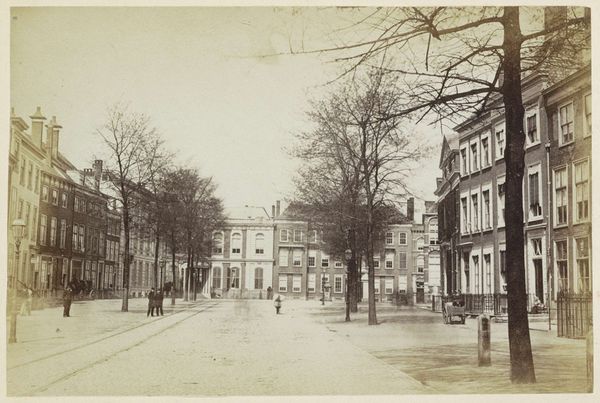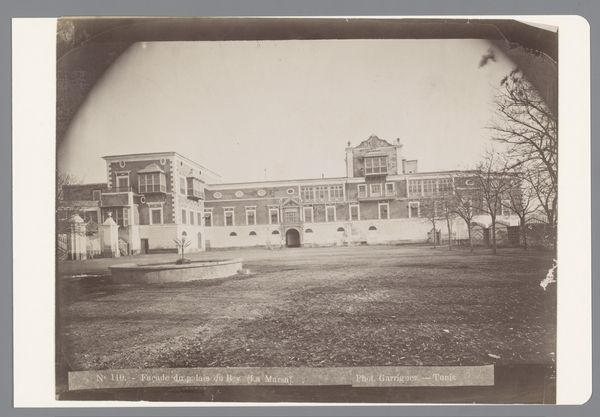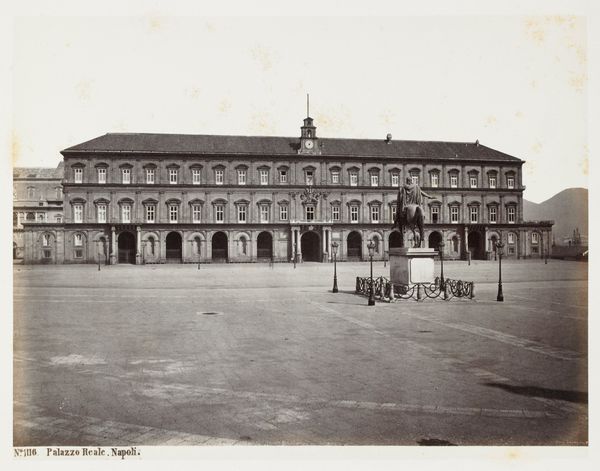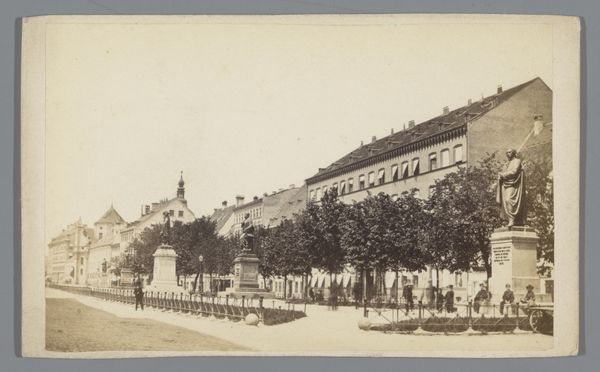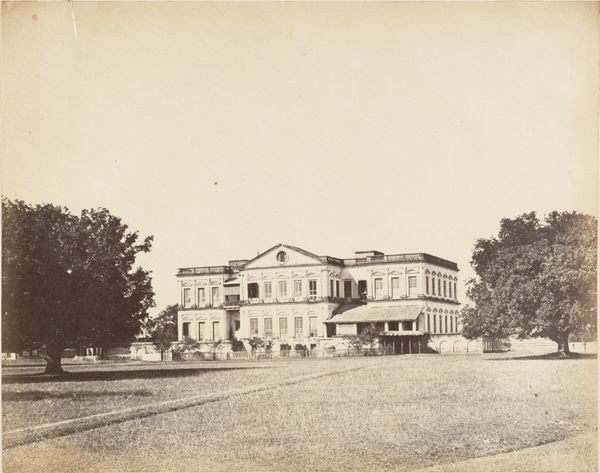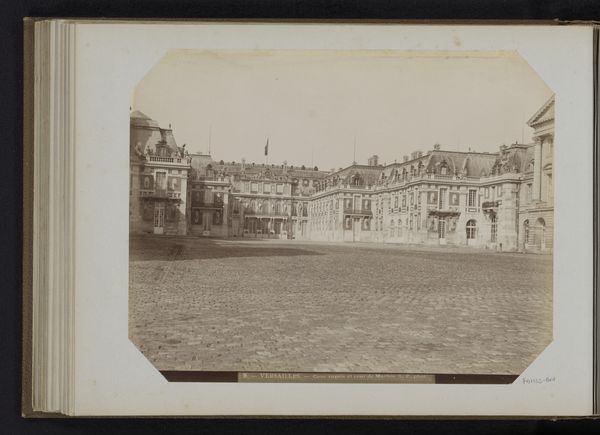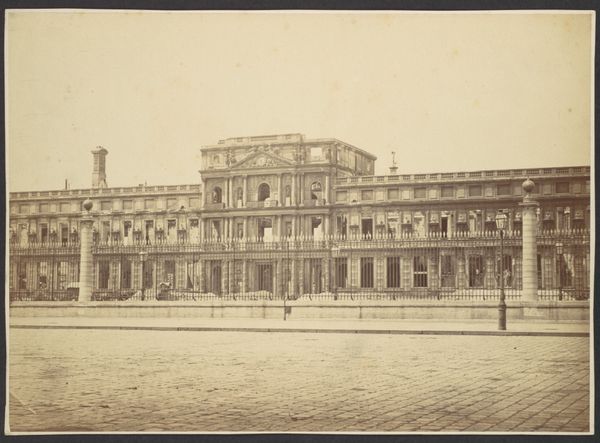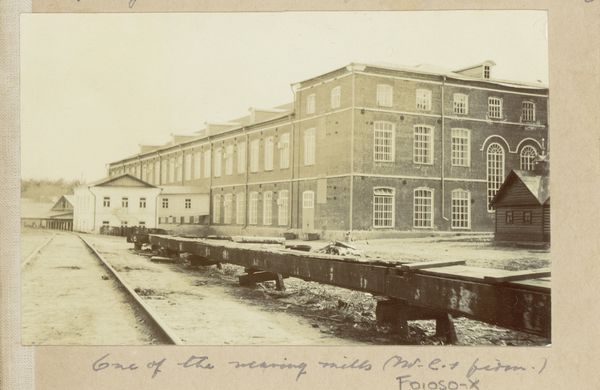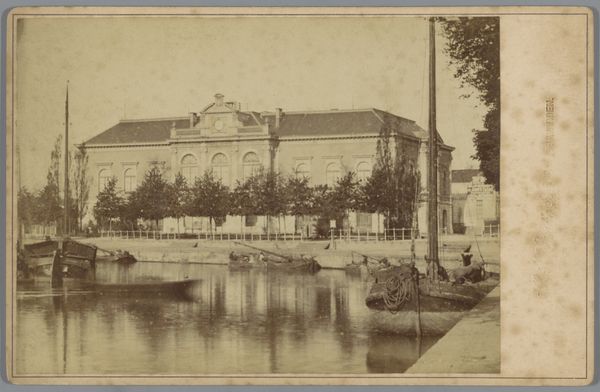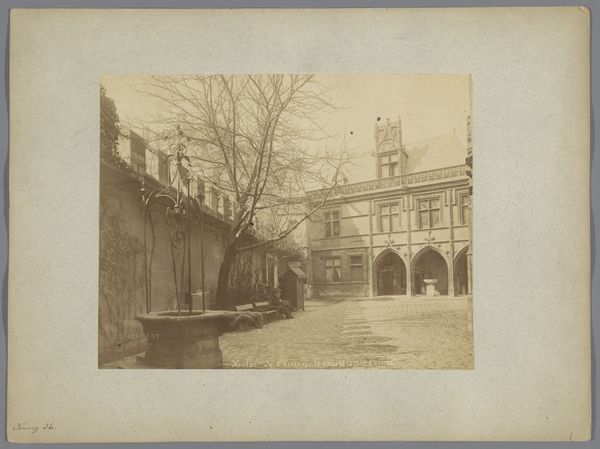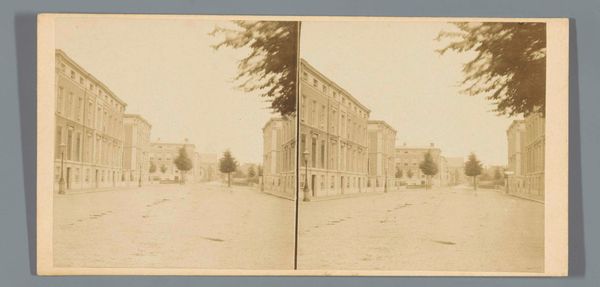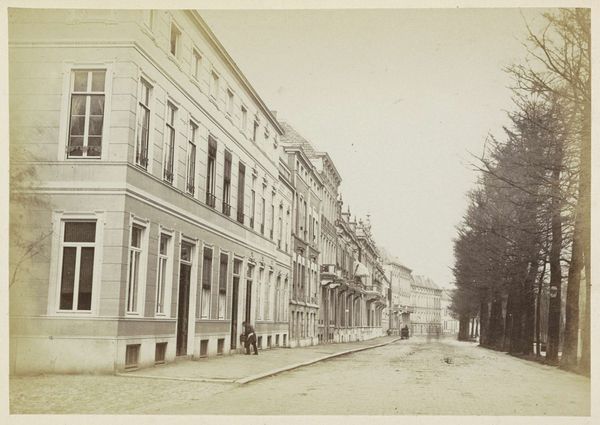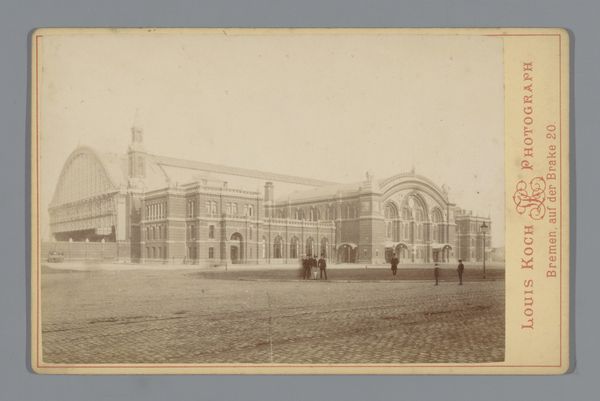
print, daguerreotype, photography, architecture
#
16_19th-century
#
pictorialism
# print
#
landscape
#
daguerreotype
#
photography
#
cityscape
#
architecture
Dimensions: Image: 37 x 46.6 cm (14 9/16 x 18 3/8 in.)
Copyright: Public Domain
Curator: I'm struck by the eerie stillness. It feels so staged, almost as if time itself is suspended within this courtyard. Editor: That's an interesting interpretation. We’re looking at "Cour des Ateliers," a photograph taken between 1875 and 1885, currently residing at the Metropolitan Museum of Art. The artist is Louis Lafon, and the medium is, of course, photography, likely a daguerreotype or a similar early printing process. What you’re picking up on, I suspect, stems from photography's historical ties to documenting urban and industrial progress. Curator: Progress at what cost, though? Look at the uniformity of the buildings, the regimented trees—it evokes Foucault’s theories on power and the panopticon. Are the workers visible? No. But their presence is implied through this architectural arrangement and order imposed. The composition seems very much in service of a burgeoning Industrial era. Editor: Absolutely. Consider the historical context. Lafon's image participates in the visual rhetoric surrounding industrialization. The architecture is both monumental and repetitive, creating a rhythm of windows, a clear symbol of function and purpose. But do we read social progress or human suppression? Curator: Both, simultaneously, isn't it always? Think about the role of labor. We’re not celebrating the individual; instead we are witnessing an embrace of industrial power structures. Those benches also, lined up empty – what type of discourse can or should occur on them? Editor: Precisely. Also think about the way institutions displayed this artwork, or were influenced by similar architectural forms in industrial contexts at that time. The "Cour des Ateliers" provides a window into the evolving role of the urban landscape itself. These architectural scenes helped to create visual justification, demonstrating power through mass and volume. Curator: It certainly reveals the anxieties inherent in this drive toward efficiency and standardization. Perhaps this helps underscore how power operates within society and informs gendered assumptions embedded within industrial production during this period. What’s so valuable here, in the present day, is that this opens up avenues for discussing inequalities and their historical roots. Editor: It really does prompt reflection about how imagery influences perspectives in the art world and society generally. The careful composition turns an ostensibly utilitarian space into something... well, profoundly thought-provoking.
Comments
No comments
Be the first to comment and join the conversation on the ultimate creative platform.
